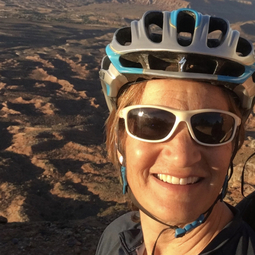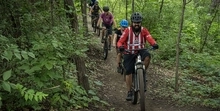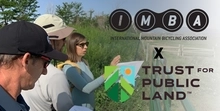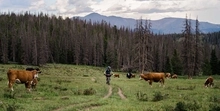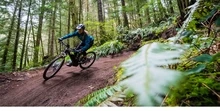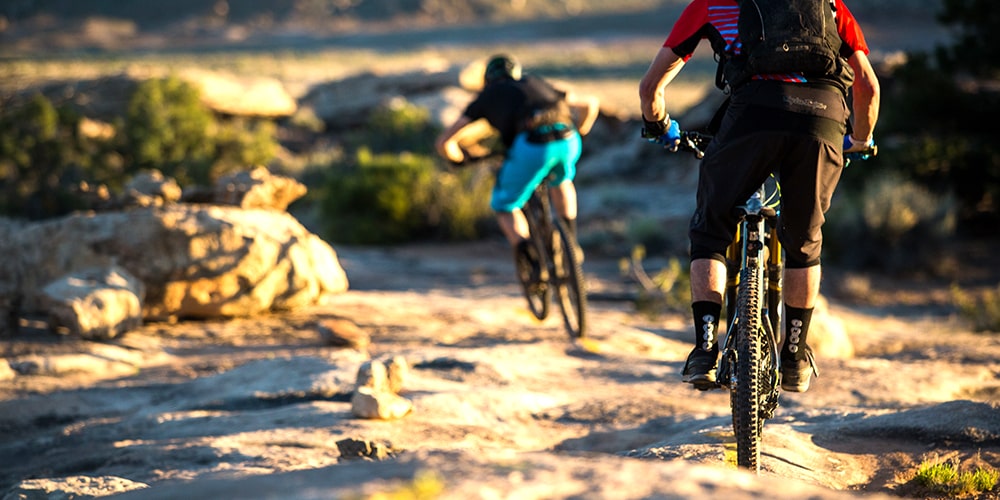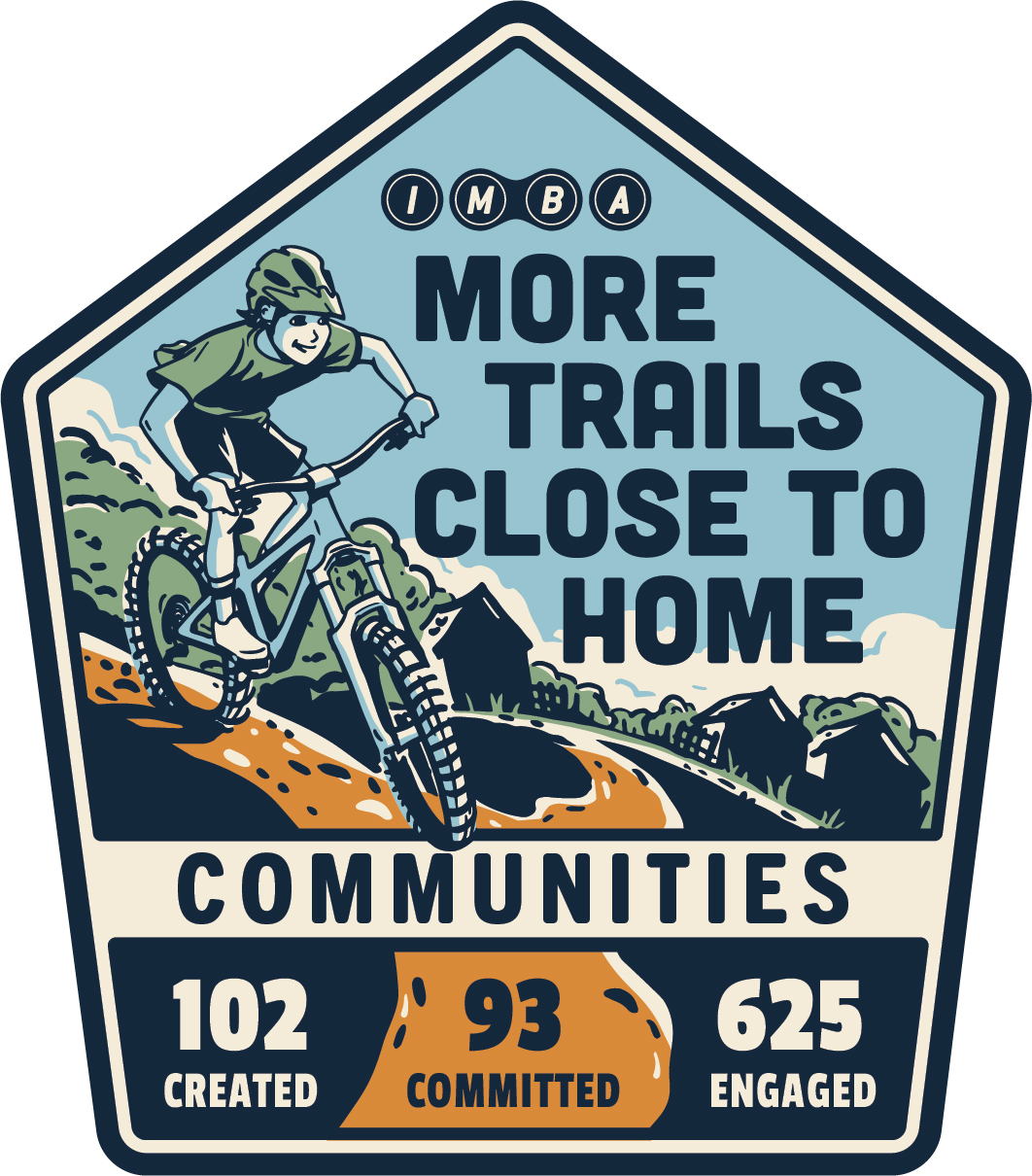Passing a Bill for Mountain Bikers
Not since 2015, has the U.S. played host to the mountain bike world tour, a multi-round mountain bike racing series sanctioned by the UCI (Union Cycliste Internationale). This fall, the final event of the 2019 Mercedes-Benz UCI Mountain Bike World Cup tour will take place in Snowshoe, West Virginia, the newest IMBA Ride Center, where an IMBA trail crew sculpted some divine lines for the cross-country race course earlier this summer.
Crew Manager Josh Olson and Trail Specialists Jess Didion and Tylor Brackett from Trail Solutions, IMBA’s trail building division, worked on the course. Olson had previously managed Snowshoe’s bike park, and Brackett, a former racer, had attended a mountain bike training camp at Snowshoe in his younger days. Both were glad to be back at Snowshoe working on this epic project.
“It’s great to be part of the world cup returning to the U.S.,” says Olson. “When I came to Snowshoe, they had a strong heritage of mountain biking, and we built on that. It’s really cool to see them host the world cup and to have the chance to work on a world-class course.”
Already familiar with Olson’s work, the Snowshoe operations team gave the trail builders free rein to create a crusher race course with really only one directive: The course should maintain the rocky, rooty feel of West Virginia’s terrain. They left the rest up to the crew, allowing them to use the flow and form of the landscape to create a technically challenging, gritty course.
“We had a good experience working with IMBA. They are a hard-working bunch. They’re professional. We learned some things watching the team work that we sent back to our own crew,” says Ken Gaitor, vice president of mountain operations at Snowshoe. “We pay for experienced and creative people so that they can do their thing—put their touch on it. The course has a lot of character.”
“The IMBA team went above and beyond what we asked them,” says Evan Cole, Snowshoe bike park manager. “We’ve had some great compliments on the course already. It’s dynamic and diverse. It turned out phenomenal. That really blew away my expectations.”
World cup cross-country courses consist of a mash-up of trail styles: wide-open finish and start lines, feed zones, spectator hot spots, roomy passing sections, and, of course, the burly zones that test the riders’ technical mettle. The Trail Solutions crew was tasked with creating four spicy sections that pass through mostly forested areas. Three of the segments were original builds and one was an existing legacy trail that needed some adjustments.
Segment 1
The first segment the crew worked on is sure to spur some jaw-dropping riding. A rocky but fast singletrack tread descends into a tight right-hand corner, rumbles through a steep, off-camber, rooty section, and then shoots into a big berm that grabs riders and slings them back onto the course. The crew put some serious TLC into machine building and hand finishing the berm.
“I’m actually pretty proud of this berm,” says Didion. “There was a kink in the radius I had to fix, and Olson wanted the exit to be a little wider, and it’s going to be on TV, so I just tried to make sure it looked good but also rode well. We actually questioned if we should put it in the segment. But everyone loves a berm. Whenever you’re questioning, ‘Should a berm go here?’ the answer 99.9% of the time is YES.”

Rock gnar on segment 1...

Say hello to my little friend, the berm on segment 1.
Segment 2
The second section was littered with small rock and marshy patches. The team removed a layer of duff through a thick, mossy forest with wet ground, then cut a singletrack line with a rocky entrance and a climb. To prevent erosion from riders and water, the team reinforced several sections of the trail with rock armoring. Even with lots of rock, the riders will still be able to fly over these natural pavers.

Armoring up the wet sections in segment 2.
Segment 3
The builders mixed things up on the third section with a smooth and lightning fast descent. Using the packable clay in the area, they molded some rollers and fun shapes into a fast, flowy line. Getting these wavy, gravity-fed lines right can be demanding. “You have to have the eye for spacing of features—rocks, jumps, turns, berms—to get them to flow together as desired,” explains Brackett. “This comes from experience and exposure to different trail styles and riding in different areas. Then there’s the actual building portion. You have to know how to create features with the machine you are operating.”

The crew deploys the machines to sculpt some flowy tread.
Segment 4
Segment four was an existing technical descent, a rocky, rooty, burnt-in trail that represents old-school, gnar, West Virginia riding. Locals will be happy to see this stretch of hometown trail in the world cup, and this shredfest is likely to be a spectator favorite. A rock garden at the top needed a little refurbishing, and the team collected a ton of rock, even driving the excavator around the forest edges to harvest chunky slabs. They crafted a chundery, stacked rock stairway with masses that ranged from the size of a microwave to a kiddie pool.
The exit offers two alternate lines, forcing riders to strategize between playing it safe on the easier line or taking a risk on a higher consequence line to shave off time. The original route is narrow, steep, and rooty with an S-curve. The optional line, a more direct route to the end of the section with a sharp turn, is equally steep with bigger, rowdy boulders.
“It was fun to be able to design outside the traditional trail rating system and just think about a race course,” says Olson. “We could be creative, and we wanted it to match the skills of riders on the international circuit. We wanted to add some puzzle pieces to make the riders think and figure out how they’re going to ride the technical sections.”

Buckle up for the staircase on segment 4.
Gaitor is excited about the finished course and the future of racing at Snowshoe. “We wanted the Snowshoe course to be wild and wonderful. It’s going to be on par with international venues, and I think we’ll continue to see high-level racing at Snowshoe,” he says.
You can try out the course for yourself since the trail will be a part of the resort bike park after the event. And if you want to see the world’s best racers tackle the beast, get yourself to Snowshoe or tune in to Red Bull TV where the event will be televised live September 6-8.

